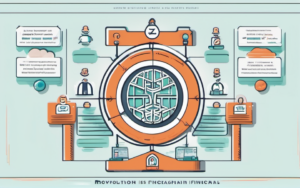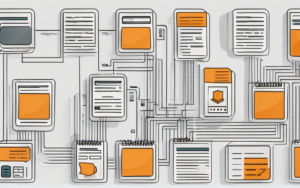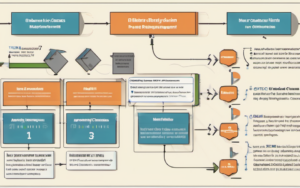The transformative potential of blockchain technology is rapidly reshaping various sectors, and its impact on Financial Inclusion is particularly noteworthy. For millions globally, access to traditional financial services remains a distant dream, but blockchain offers a pathway to a more inclusive and equitable financial system. This technology promises to revolutionize how individuals and businesses interact with financial services, bridging the gap between the financially excluded and the mainstream economy.
1. Blockchain: A Catalyst for Financial Inclusion
1.1 The Challenge of Financial Exclusion
Billions of people worldwide lack access to basic financial services like bank accounts, credit, and insurance. This financial exclusion disproportionately affects women, low-income individuals, and residents of developing countries. The consequences are far-reaching, hindering economic growth, perpetuating poverty, and limiting opportunities for personal advancement. Traditional financial institutions often find it challenging and unprofitable to serve these underserved communities due to high operational costs and logistical difficulties. This creates a significant barrier to economic empowerment for a vast segment of the global population. Many rely on informal and often exploitative financial practices, lacking the security and transparency of formal systems.
1.2 Blockchain’s Potential to Bridge the Gap
Blockchain technology, with its decentralized and transparent nature, offers a compelling solution. By eliminating intermediaries and reducing transaction costs, blockchain can make financial services more accessible and affordable to underserved populations. Its inherent security features enhance trust and transparency, fostering greater participation in the financial system. This is particularly relevant in regions where trust in traditional institutions is low. Moreover, blockchain’s ability to operate in a decentralized manner means it can function effectively even in areas with limited infrastructure. This makes it a powerful tool for promoting financial inclusion in remote and underserved communities. The potential to empower individuals with greater financial control and opportunity is substantial.
2. Key Applications of Blockchain in Financial Inclusion
2.1 Digital Identity and KYC
Establishing secure and verifiable digital identities is crucial for accessing financial services. Blockchain can streamline the Know Your Customer (KYC) process, making it faster, cheaper, and more efficient. This is particularly important in developing countries where obtaining official identification documents can be challenging. Blockchain-based identity solutions reduce fraud and enhance security while improving access to financial products for individuals previously excluded due to lack of proper identification. This simplification unlocks the potential for participation in the formal financial system for millions.
2.2 Microfinance and Lending
Blockchain can revolutionize microfinance and lending by reducing the risks and costs associated with lending to individuals with limited credit history. Smart contracts can automate loan processing, reducing administrative overhead and enabling faster disbursement of funds. Peer-to-peer lending platforms built on blockchain can connect lenders directly with borrowers, bypassing traditional financial institutions and reducing interest rates. This addresses the issue of limited access to credit for underserved communities and small businesses, fostering economic growth at the grassroots level. Examples of this are emerging across the globe, particularly in developing markets.
2.3 Cross-Border Payments and Remittances
Remittances are a vital source of income for many families in developing countries. Blockchain can significantly reduce the cost and time associated with cross-border payments. Platforms like Ripple leverage blockchain to facilitate faster and cheaper international money transfers, enabling migrants to send money home more efficiently. This directly impacts the livelihoods of millions, particularly in the global south where remittance flows are a significant driver of economic activity. This efficiency translates to more money reaching families and communities in need.
2.4 Insurance and Savings
Blockchain can enhance access to insurance and savings products by creating transparent and secure platforms. Microinsurance schemes, for example, can be implemented using smart contracts to automate payouts and reduce administrative costs. This makes insurance more affordable and accessible to low-income populations, providing critical protection against unexpected events. Similarly, blockchain-based savings platforms can offer greater security and transparency, encouraging savings behavior and improving financial stability. This helps build financial resilience in vulnerable communities and promotes long-term economic security.
3. Case Studies: Real-World Examples of Blockchain’s Impact
3.1 Bitt’s Digital Currency in Barbados
Barbados has successfully implemented a central bank digital currency (CBDC) using blockchain technology. This has streamlined domestic payments, reduced transaction costs, and enhanced financial inclusion. The project has demonstrated the practical application of blockchain in a real-world setting, showcasing its potential to transform national financial systems. The success of this initiative paves the way for other nations to explore similar solutions to enhance financial accessibility.
3.2 Ripple’s Cross-Border Payments Network
Ripple’s network utilizes blockchain technology to facilitate faster and cheaper cross-border payments. This has significantly reduced the cost and time associated with remittances, benefiting millions of migrants worldwide who send money back to their home countries. The efficiency improvements offered by Ripple’s system are substantial, directly impacting the financial well-being of numerous individuals and families. The reduction in fees has direct positive implications for financial inclusion.
3.3 Kiva’s Microloan Platform
Kiva uses blockchain technology to improve transparency and accountability in its microloan platform. By leveraging blockchain, Kiva can track the disbursement and repayment of loans more efficiently, reducing fraud and enhancing the overall effectiveness of its lending program. This has a positive impact on both lenders and borrowers, building trust and facilitating greater access to vital microfinance solutions. This demonstrates the use of blockchain in improving existing systems for greater inclusivity.
4. Challenges and Opportunities for Blockchain Adoption
4.1 Regulatory Uncertainty
The lack of clear regulatory frameworks for blockchain technology presents a significant hurdle to widespread adoption. Governments and regulators need to develop appropriate policies that foster innovation while mitigating risks. Clarity and predictability are essential to attract investment and ensure the responsible development of blockchain solutions for financial inclusion. This is crucial for building public trust and confidence in the technology.
4.2 Scalability and Interoperability
Blockchain technology needs to improve scalability to handle large volumes of transactions. Interoperability between different blockchain platforms is also essential to avoid fragmentation and create a seamless financial ecosystem. Addressing these technical challenges is crucial for making blockchain solutions more practical and widely applicable across different regions and contexts. These technical improvements will be essential to unlock the full potential of blockchain for global financial inclusion.
4.3 Digital Literacy and Infrastructure
Lack of digital literacy and adequate infrastructure remains a significant barrier to blockchain adoption in many parts of the world. Efforts to improve digital literacy and expand internet access are critical to ensuring that the benefits of blockchain technology reach those who need it most. Bridging this digital divide is paramount to empowering individuals to participate in a more inclusive financial system. Investing in digital infrastructure and education is key to maximizing the impact of blockchain.
5. The Future of Blockchain and Financial Inclusion
5.1 Emerging Trends and Innovations
Several emerging trends are poised to further accelerate the adoption of blockchain for financial inclusion. These include the development of more efficient and scalable blockchain platforms, improved user interfaces, and the integration of blockchain with other technologies like artificial intelligence. Ongoing innovation in this space will continue to expand the reach and impact of blockchain solutions.
5.2 The Role of Governments and Regulators
Governments and regulators have a critical role to play in fostering the responsible development and adoption of blockchain technology for financial inclusion. They need to create supportive regulatory environments, invest in infrastructure, and promote digital literacy. Active government support will be essential for unlocking the transformative potential of blockchain and ensuring its equitable distribution.
5.3 A More Inclusive and Equitable Financial System
Blockchain technology has the potential to fundamentally reshape the global financial landscape, making it more inclusive and equitable. By addressing the challenges of financial exclusion, blockchain can empower billions of people, fostering economic growth, reducing poverty, and promoting greater social and economic justice. The ongoing development and implementation of blockchain solutions will pave the way for a more just and equitable financial future. Its potential to contribute to a more prosperous and inclusive world is undeniable.




